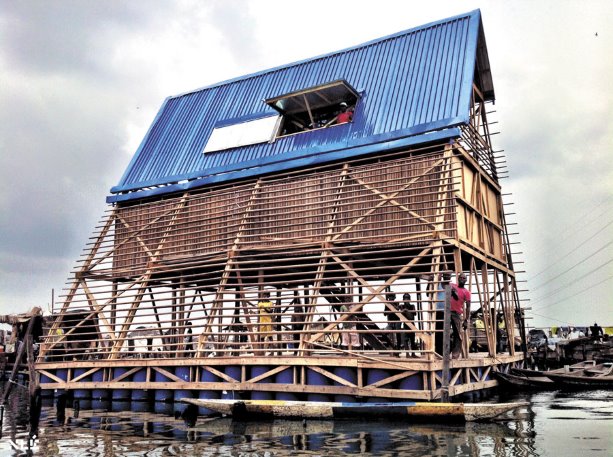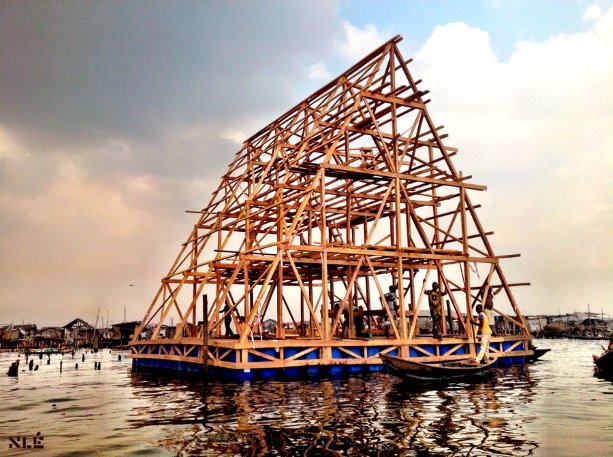Architects and landscape designers discussed how to design buildings for the realities of climate change at the International Architectural Roundtable held Nov. 30 as part of The Buildings Show at the Metro Toronto Convention Centre.
The panel included moderator Elsa Lam, editor of Canadian Architect magazine, Berend Strijland, architect at NLE in Amsterdam, Pippa Brashear, director of planning and resilience at SCAPE Landscape Architecture, David Turnbull, innovation design director at ATOPIA Research Inc. dba PITCHAfrica and James Timberlake, co-founder of KieranTimberlake.
"In the face of these changes, architecture is facing a new necessity — designing for resiliency," said Lam. "As architects, how can we build buildings that can resist the chronic stresses of changing climate patterns but that can also recover successfully from disastrous weather events?"
Panellists discussed innovative resilient and sustainable building projects they have worked on as tangible examples.
Strijland talked about a unique floating school project he worked on in Africa in the coastal area in Lagos. Urbanization in this centre resulted in a village called Makoko being built on the Lagos Lagoon.
"People moved into the city and they literally ran out of land to build on so they started to build on water," explained Strijland. "There are no roads, there is no modern infrastructure, yet there is a functioning economy and there are about 100,000 people who currently live there." The other challenge was how to float the building. Most structures in the area are constructed on stilts.
"What we thought is we could actually use recycled oil barrels to float the building instead of building it on stilts," said Strijland.
The three-storey wood structure, built by local carpenters, was floated on 256 barrels contained on a wooden platform.
Communities like Makoko often face regulatory uncertainties and authorities didn’t know if the structure should be categorized as a building or a boat.
"The first time we registered it, we registered as a boat," said Strijland. "One of the great things that happened is that Lagos actually endorsed the project and endorsed the urban condition of Makoko as an urban model, whereas two years before they wanted to wipe it all out… Through projects like this we actually catalyze change."
Brashear admitted she is not an architect but a practitioner dealing with climate change working for a landscape architecture firm. She lives and works in New York City where Hurricane Sandy hit in 2012.
"We were confronted with the fact that even in a highly urbanized environment, we are so close to the forces of nature and the fragility of ourselves and our built environment," said Brashear. "It’s about how we can introduce the landscapes and create spaces where these ecologies can co-exist and we can inhabit these edges without destroying our buildings, relationship to the water and our coastal ecosystems."
Her firm is working on the Living Breakwaters concept design, developed for the U.S. Department of Housing and Urban Development’s Rebuild by Design (RBD) Initiative. It employs breakwaters to buffer neighbourhoods from wave damage and erosion while providing a more biodiverse habitat, Brashear explained.
"What breakwaters do is they reduce waves… it steps down the risk, it doesn’t eliminate it," said Brashear. "They don’t keep water out but they reduce that really damaging effect of storms and begin to grow the coast over the area that has eroded."
Timberlake’s firm KieranTimberlake was involved with the New Orleans rebuilding project. The firm was among those selected to design safe, affordable, adaptable housing to rebuild the Lower Ninth Ward, which was hit hard by Hurricane Katrina.
There were several challenges with the site, Timberlake explained. It was situated below sea level, vulnerable to future storms and was long and narrow. Construction of the first house built for residents who lost their home in the hurricane involved a mix of prefabricated structural insulated panel shells and on-site techniques, he said.
"One of the things we’ve done over the years is try to think of resiliency in terms of delivery models," explained Timberlake.
Turnbull discussed the construction of PITCHAfrica’s first Waterbank School built in Kenya.
The idea to harvest rainwater from structures was born when Turnbull and his colleagues took part in a soccer tournament in Denmark in 2007.
"What we realized sitting in the stands of this little stadium was that if we could make the playing surface elevated, porous and think of the stands as being part of an artificial watershed, we could do something quite amazing," said Turnbull. "We can draw surface water, rain water, store it in tanks under the playing surface, pass it through a filtration system and use it for a variety of things."
In Africa, women and girls often collect water, walking to it for 10 hours a day and consequently missing school, Turnbull explained. His company was approached by the Zeitz Foundation with US$50,000 to build a school in Kenya.
"A typical school in rural Africa is four classrooms in a row, each eight metres by eight metres," Turnbull noted. "We said we would like to see if we can make a building which is 24 metres by 24 metres, with the biggest rainwater capturing surface we can make for the money, and underneath the courtyard in the centre of this we would build the biggest tank that we could build, 150,000 litres plus of water storage capacity."
The school was built on a simple principle.
"It’s very, very simple construction, but on the other hand it works," said Turnbull. "It also very simply does something I’m very proud of which is the girls go to school to get the water. So it completely transforms that fundamental problem which is that women and girls were walking away from school to get water. Bringing water into a community that hasn’t had water before, that’s a big deal."

1/3
Berend Strijland from NLE, an architecture, design and urbanism practice in Amsterdam, talked about the Makoko floating school project in Nigeria at a recent roundtable discussion.
Photo: NLE
2/3
The Makoko floating school project in Nigeria during construction.
Photo: NLE
3/3
David Turnbull



Recent Comments
comments for this post are closed